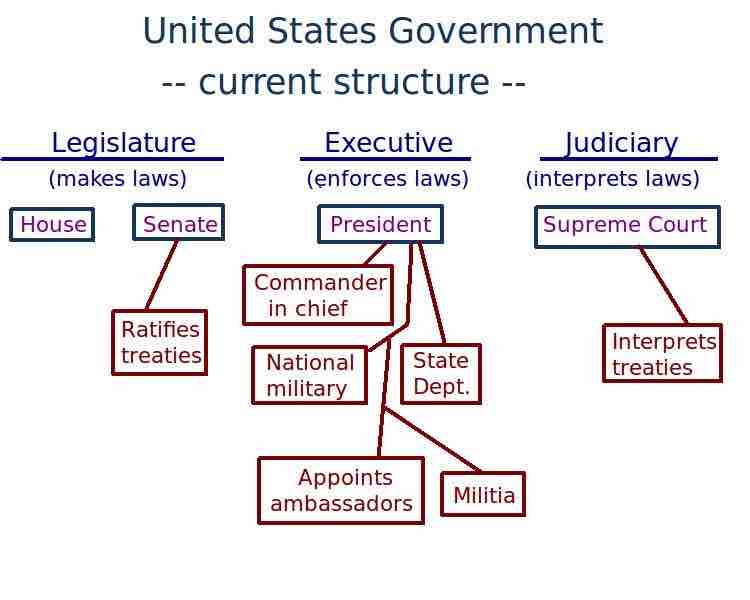Concept
Version 7
Created by Boundless
Expressed Powers

U.S. Foreign Policy Structure
The task of making foreign policy in the United States, according to the United States Constitution, is divided among different branches of government, with the executive branch having much of the decision-making authority, while the Senate ratifies treaties (2/3 vote needed to pass) and the Supreme Court rules on how to interpret treaties. Congress has a role in controlling appropriations for military expenditures.
Source
Boundless vets and curates high-quality, openly licensed content from around the Internet. This particular resource used the following sources:
"Foreign policy US government structure."
http://en.wikipedia.org/wiki/File:Foreign_policy_US_government_structure.png
Wikipedia
Public domain.